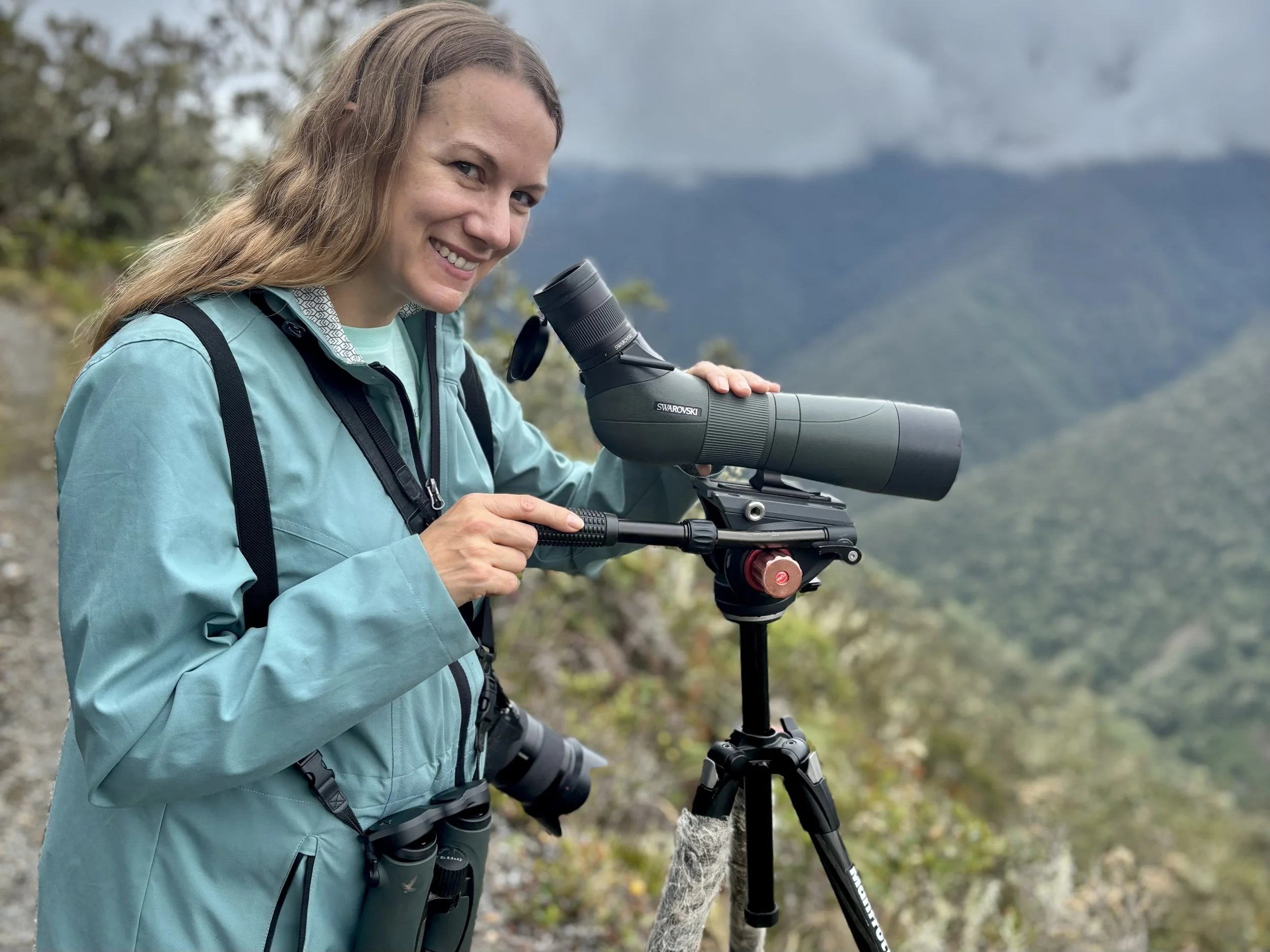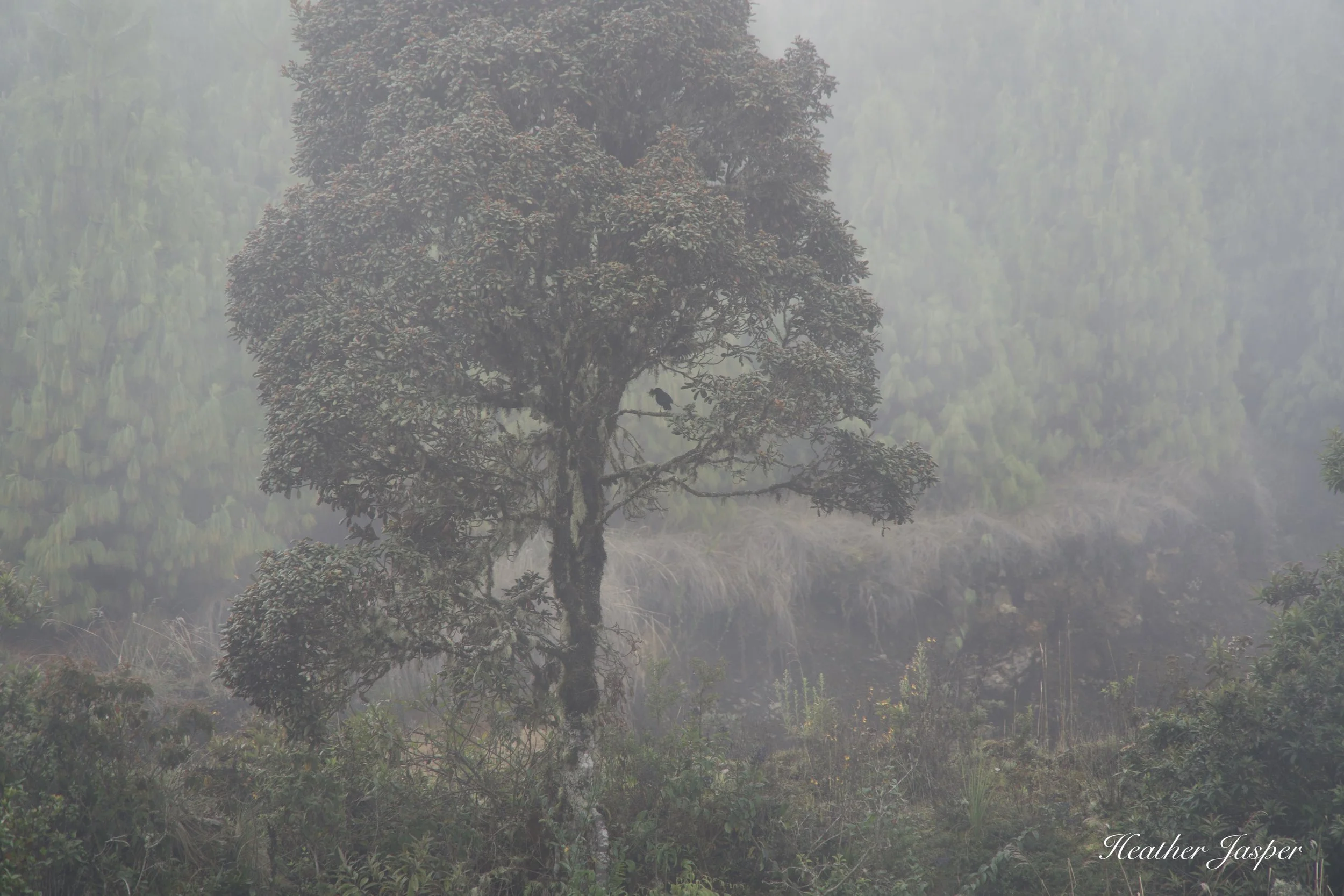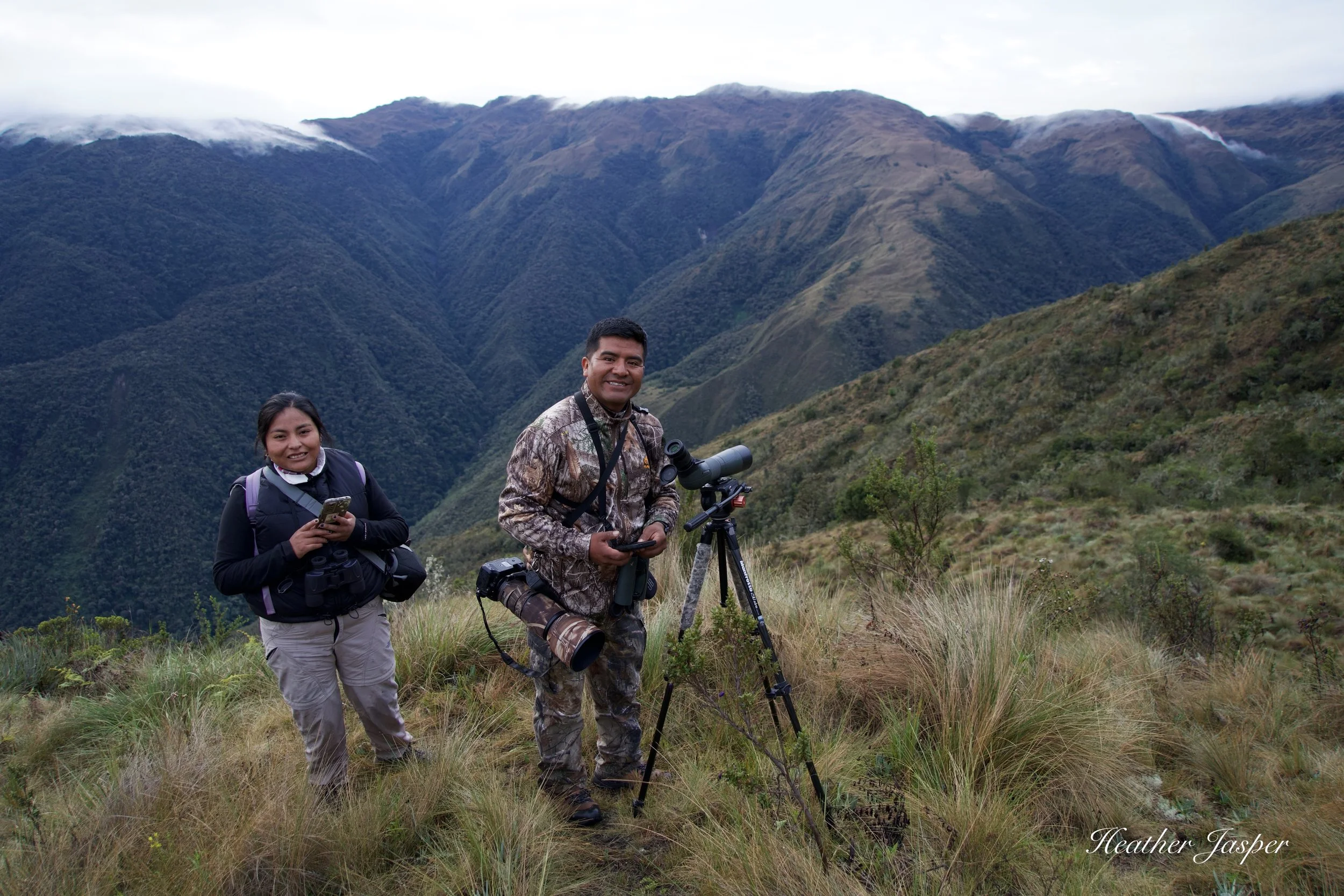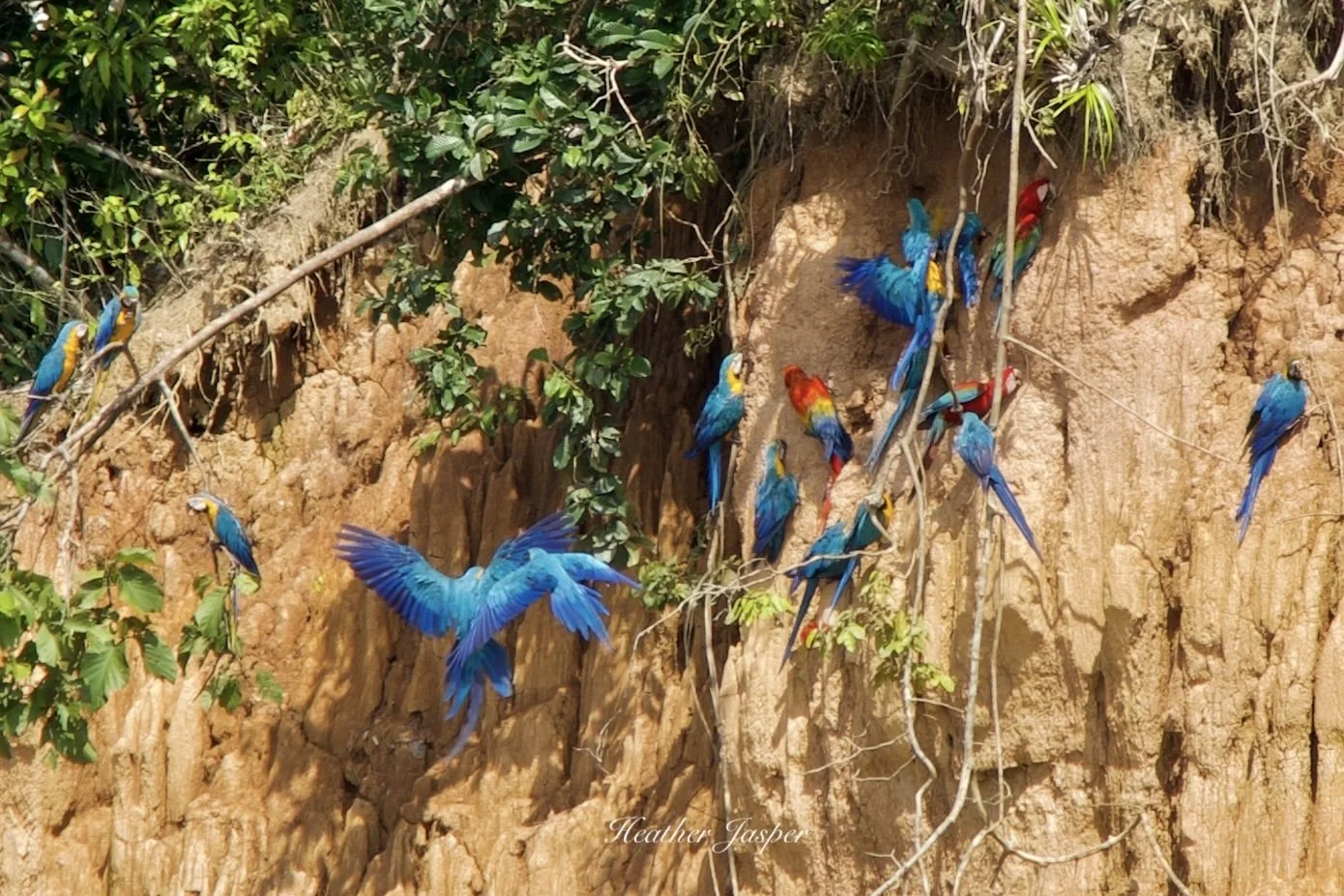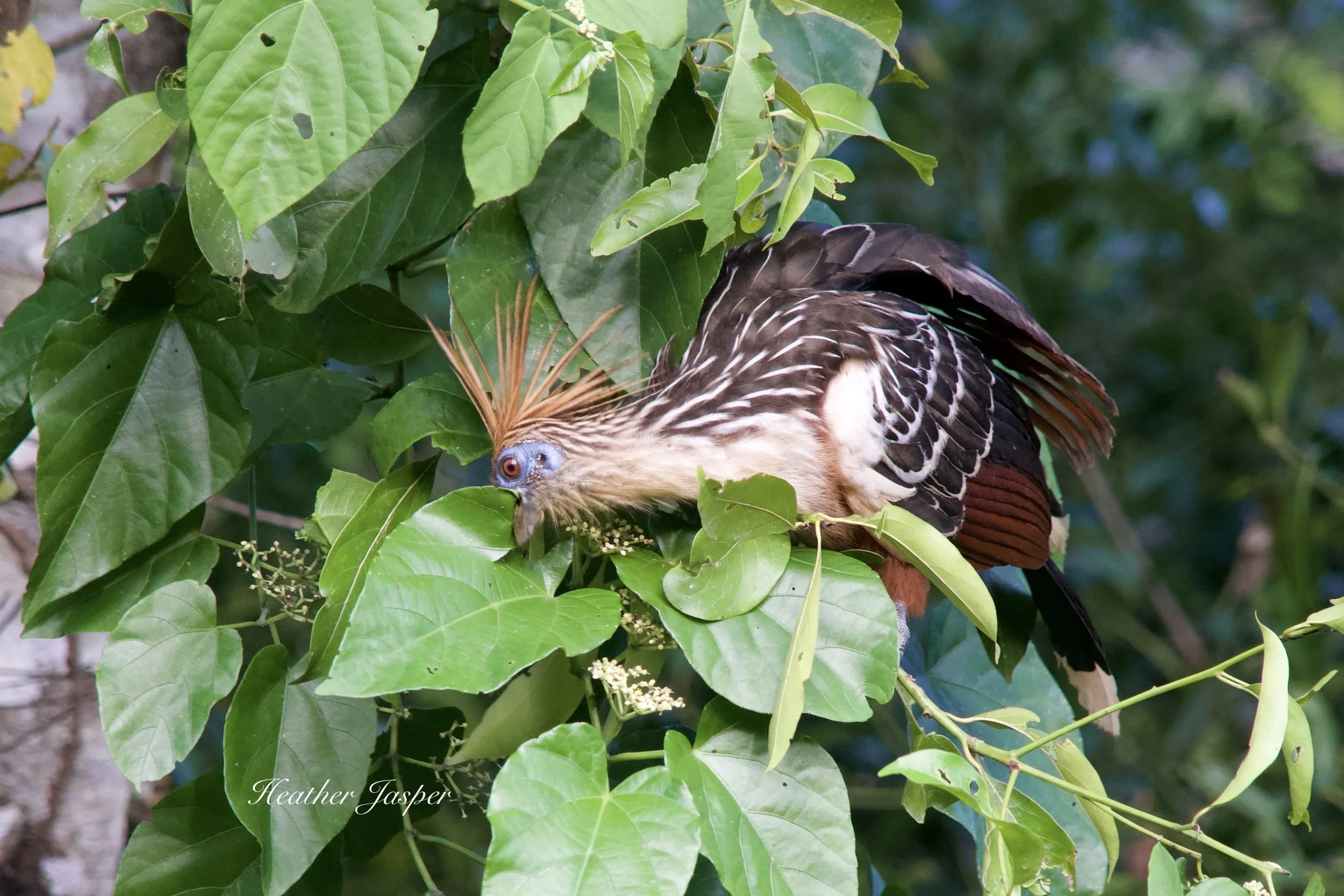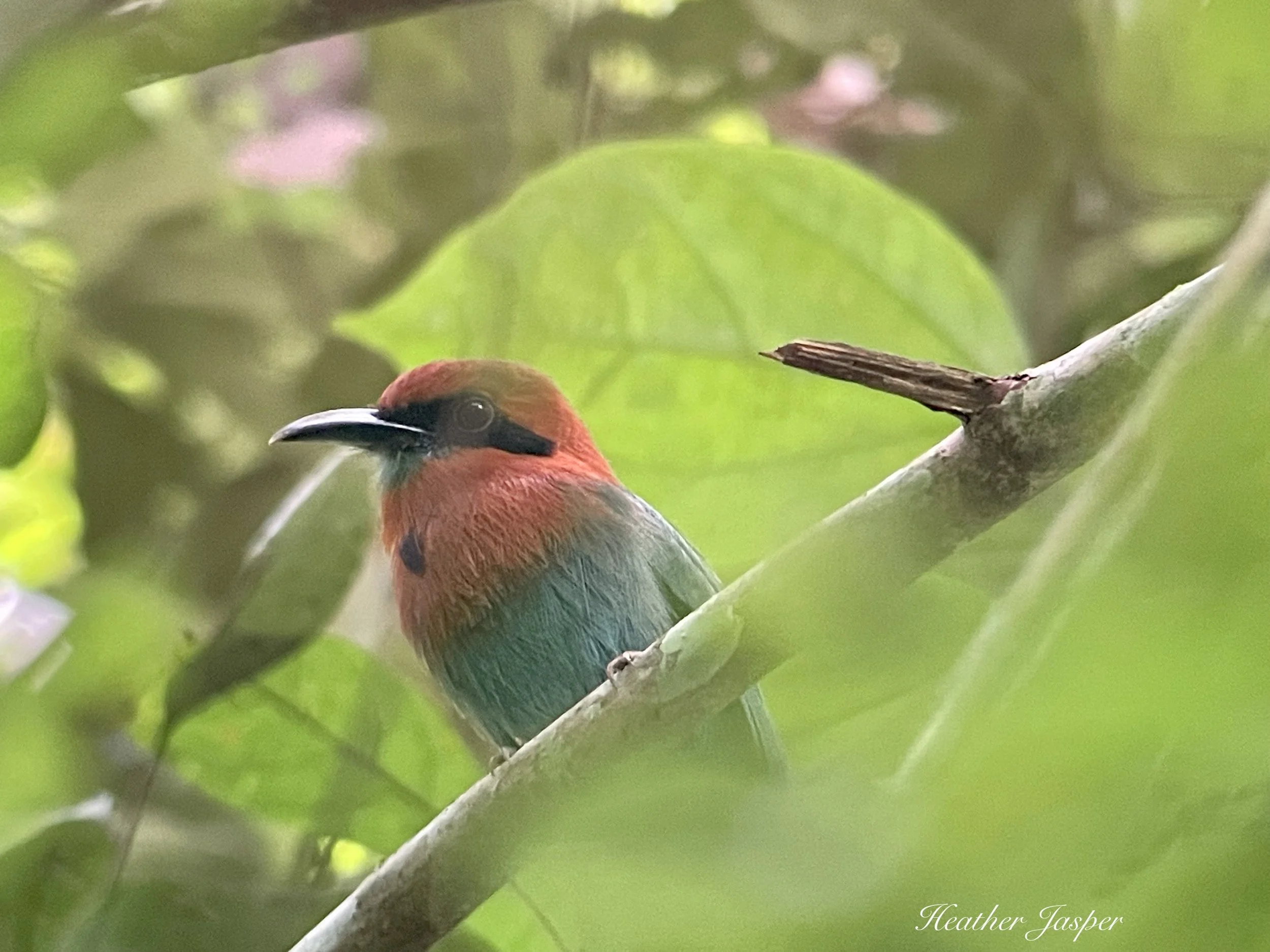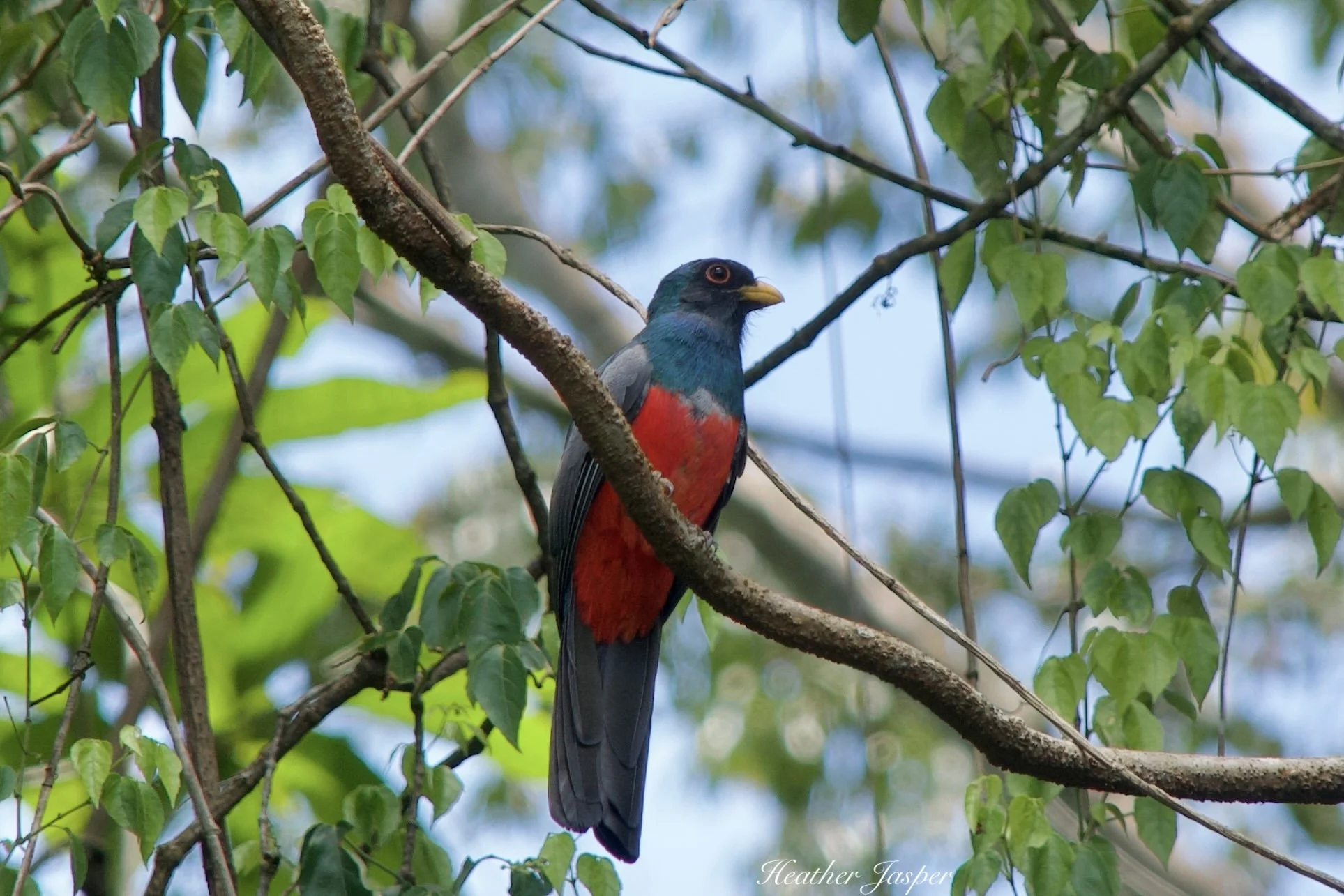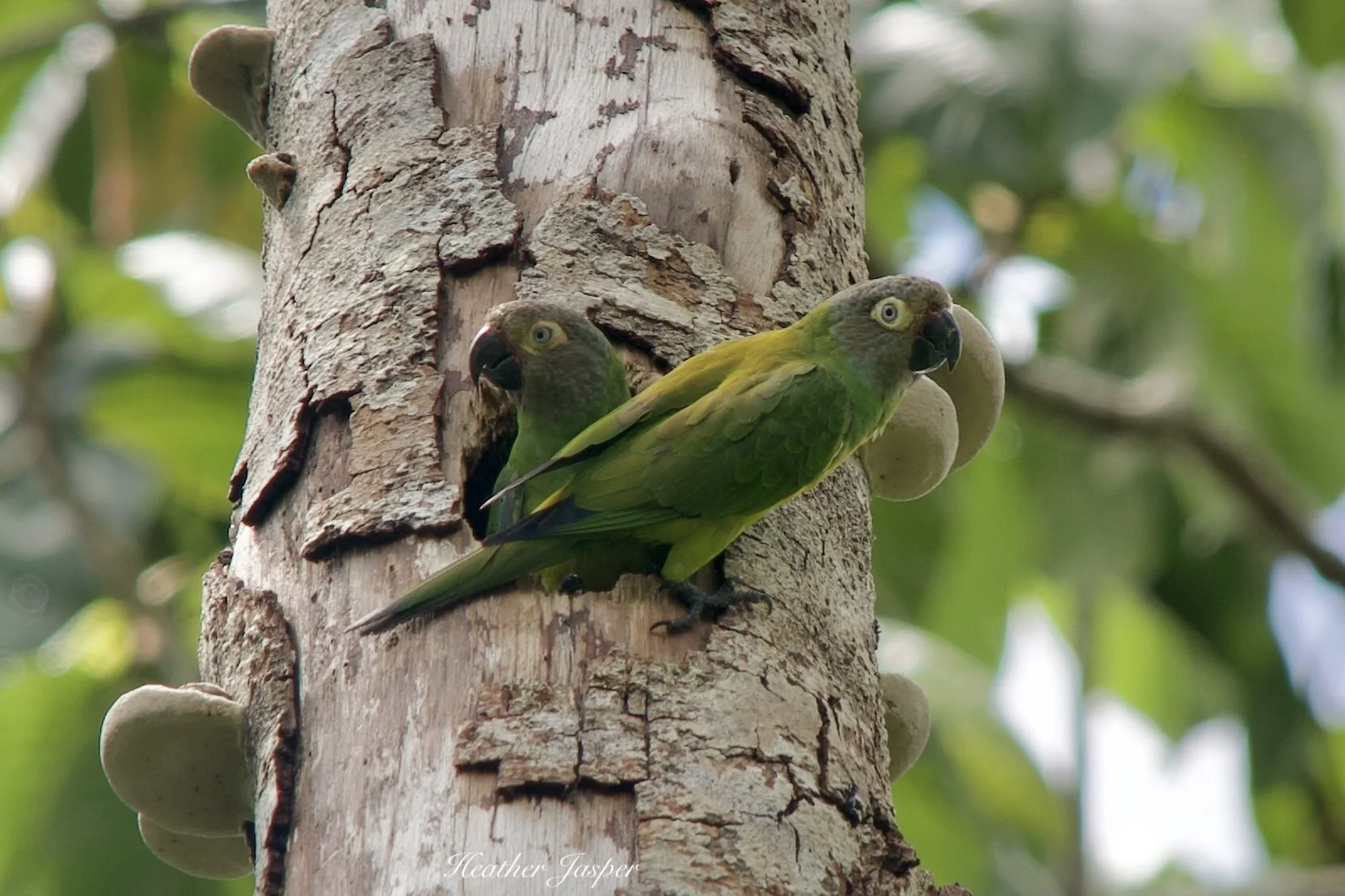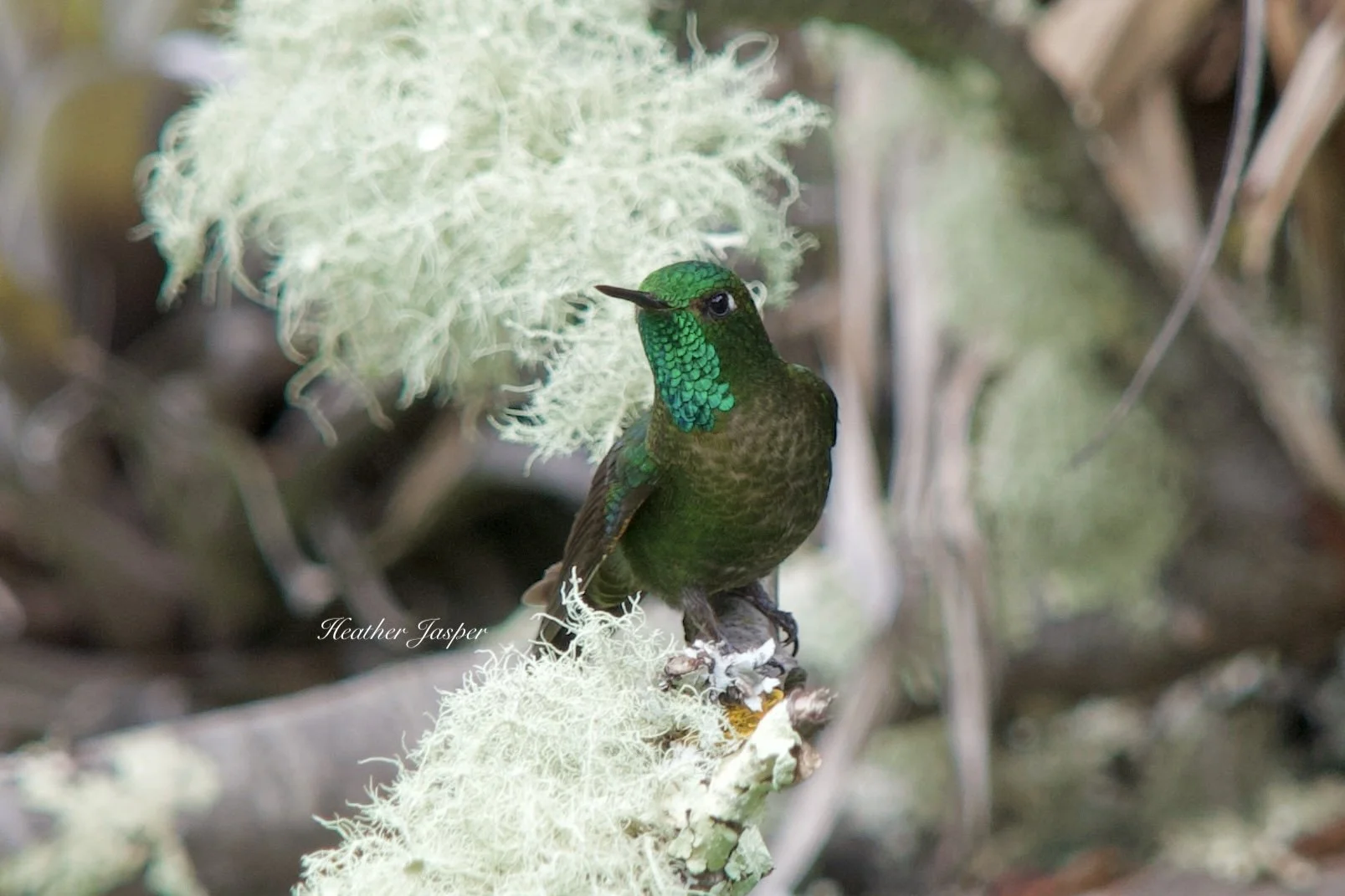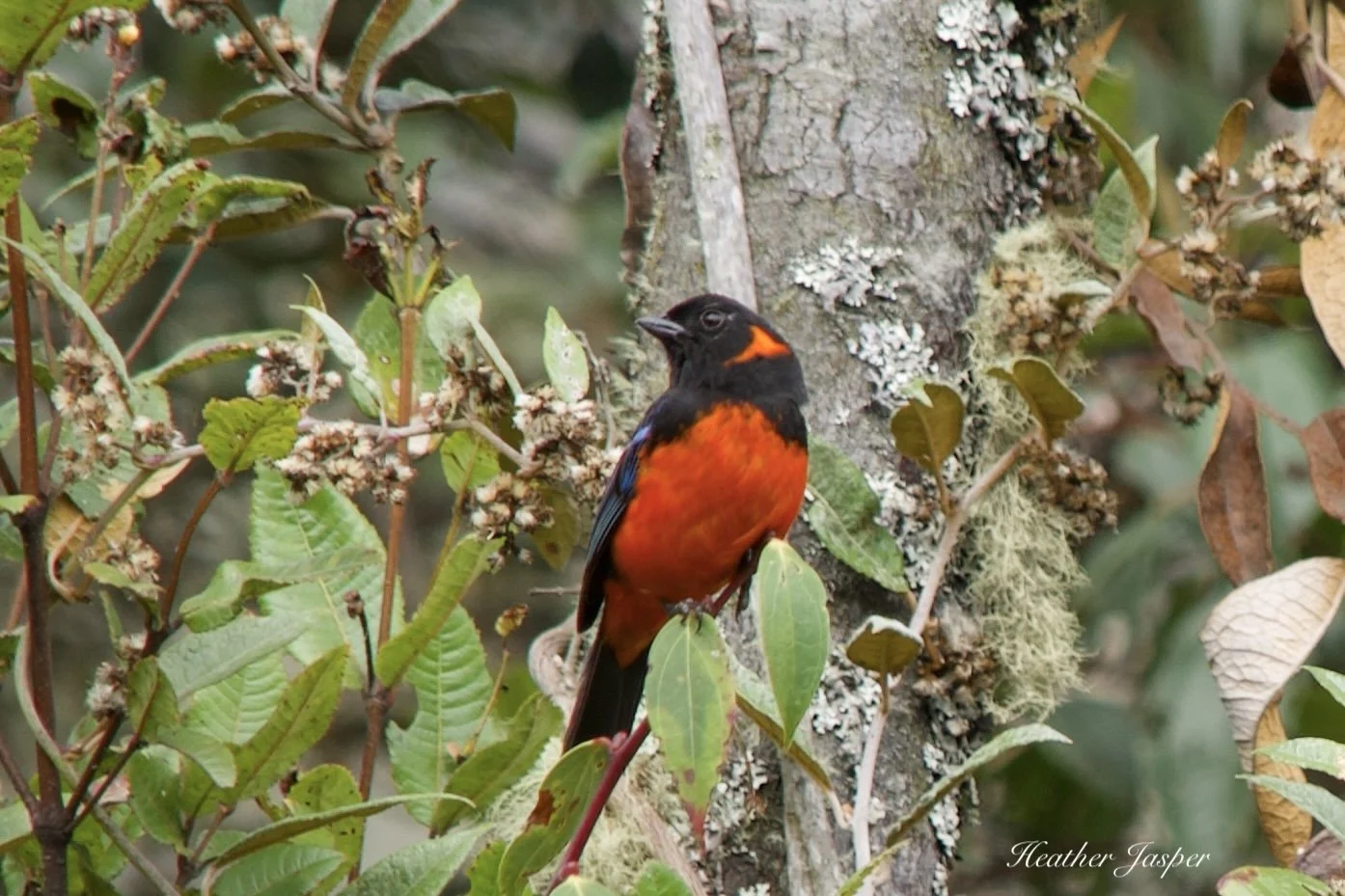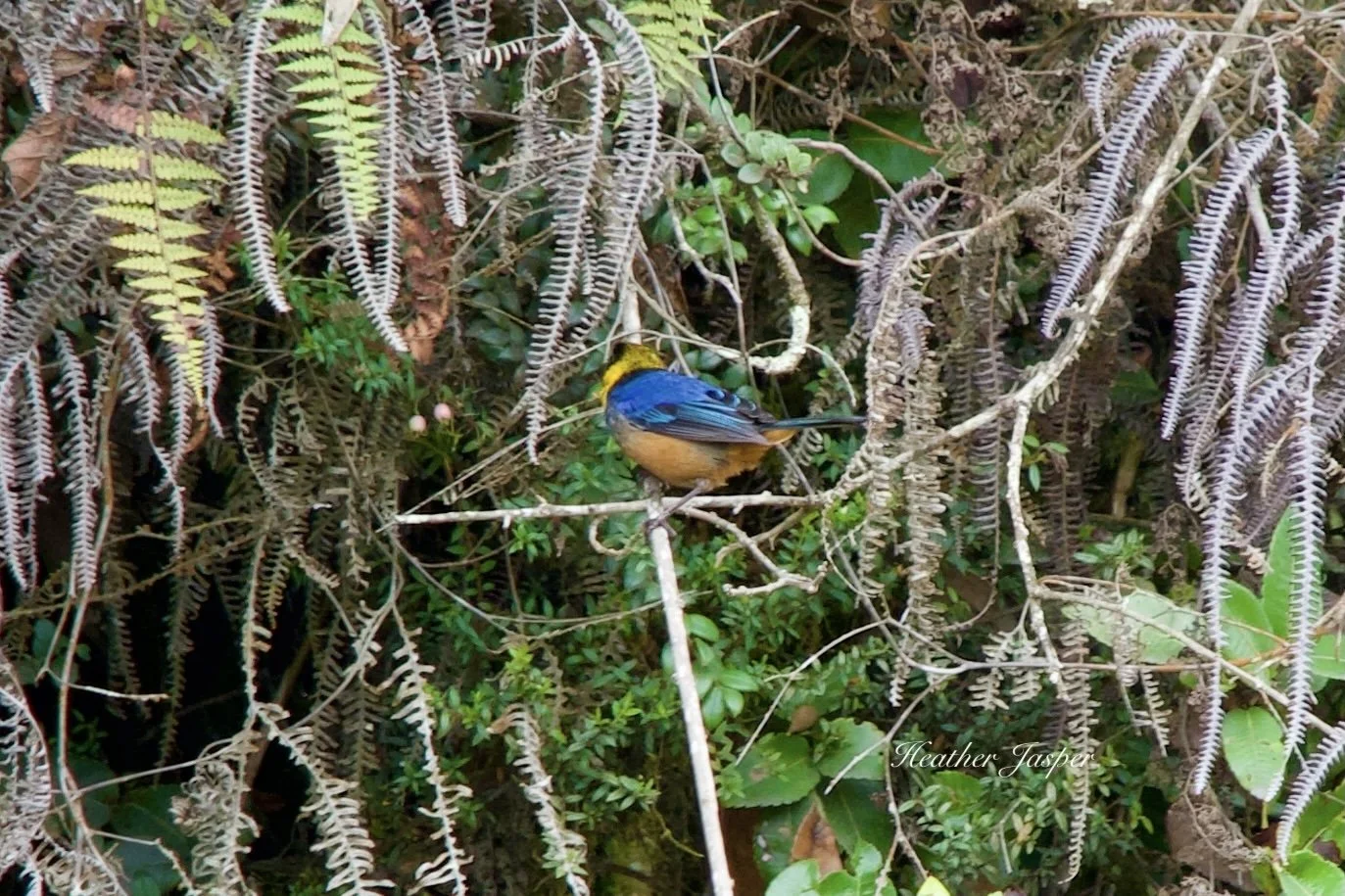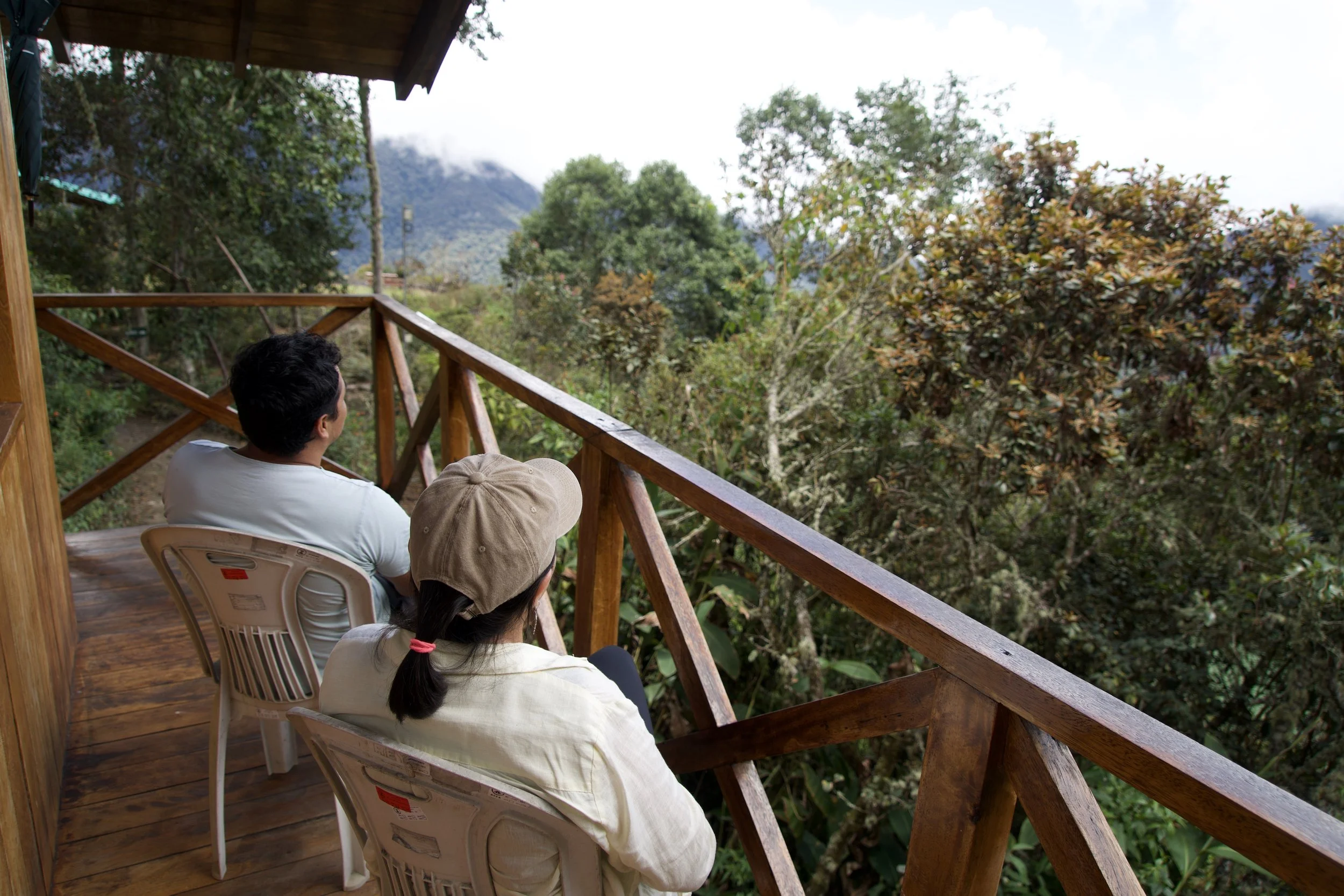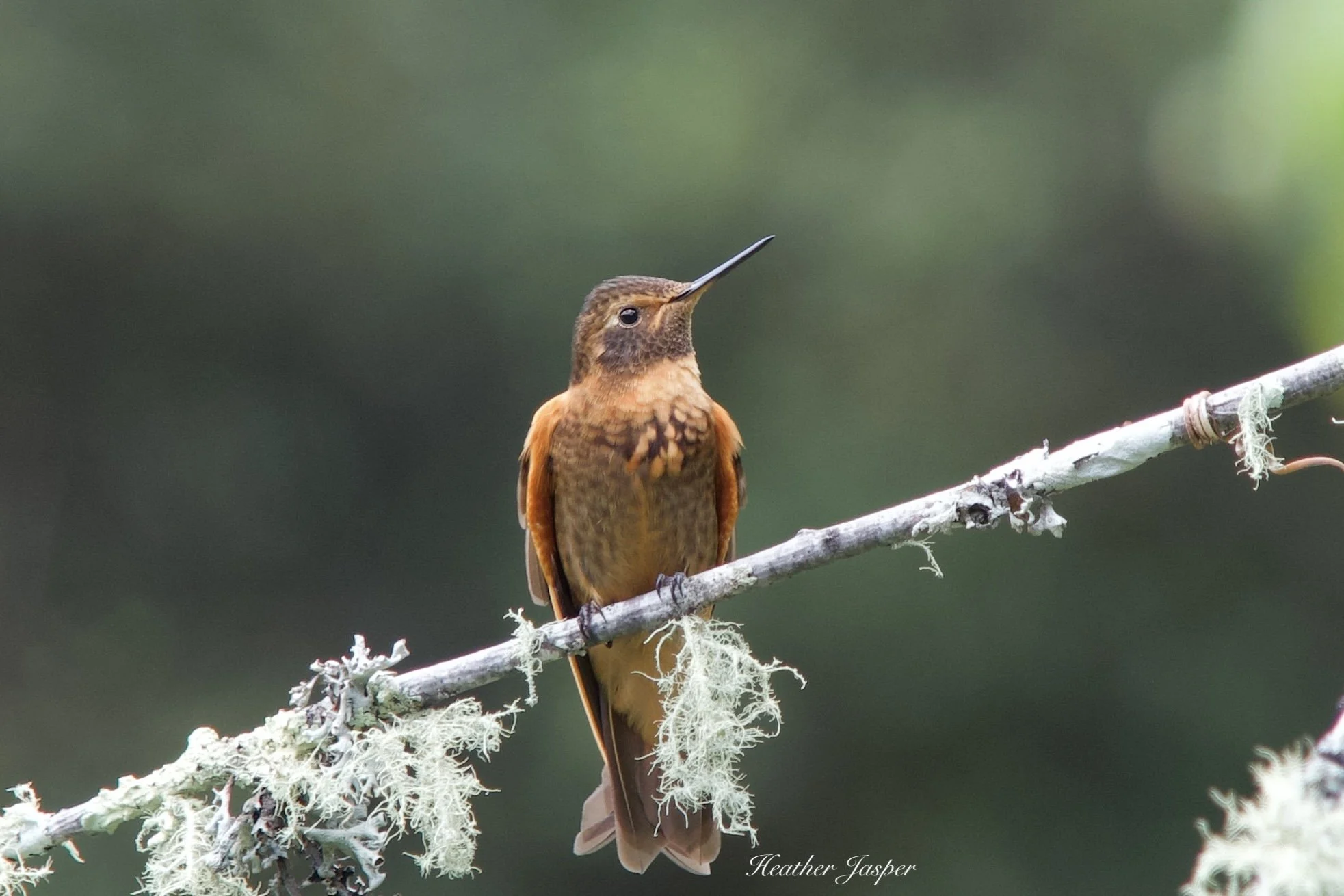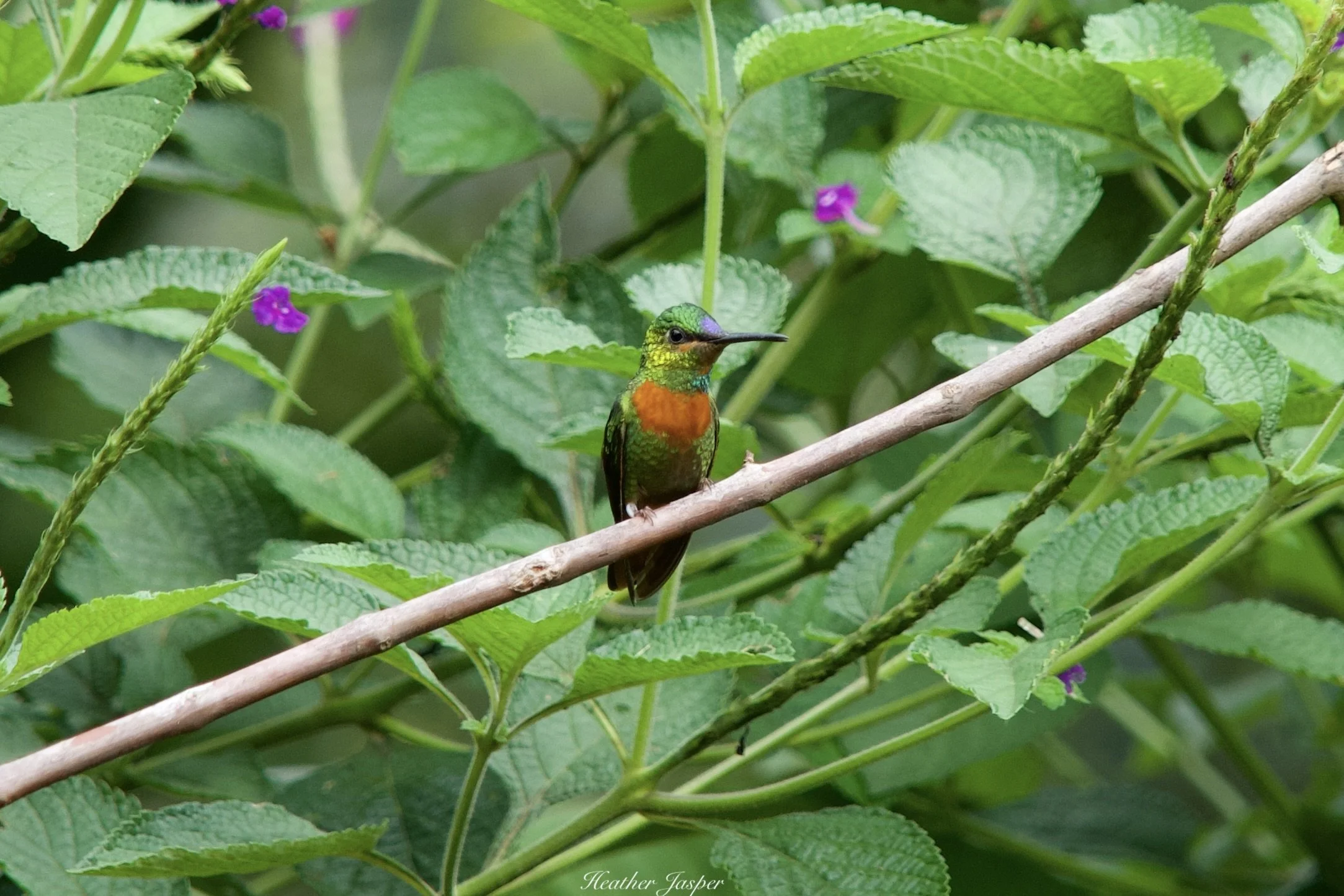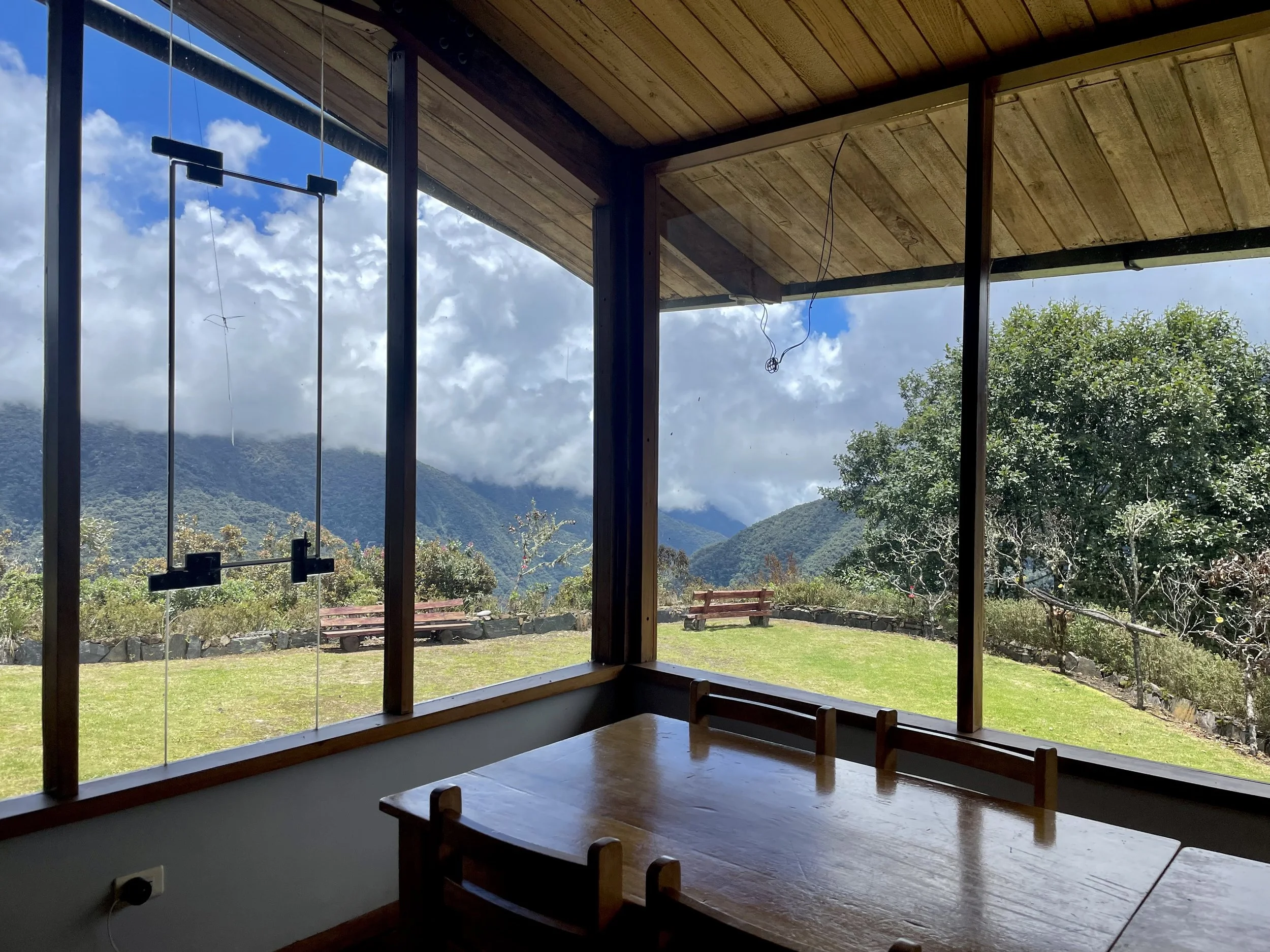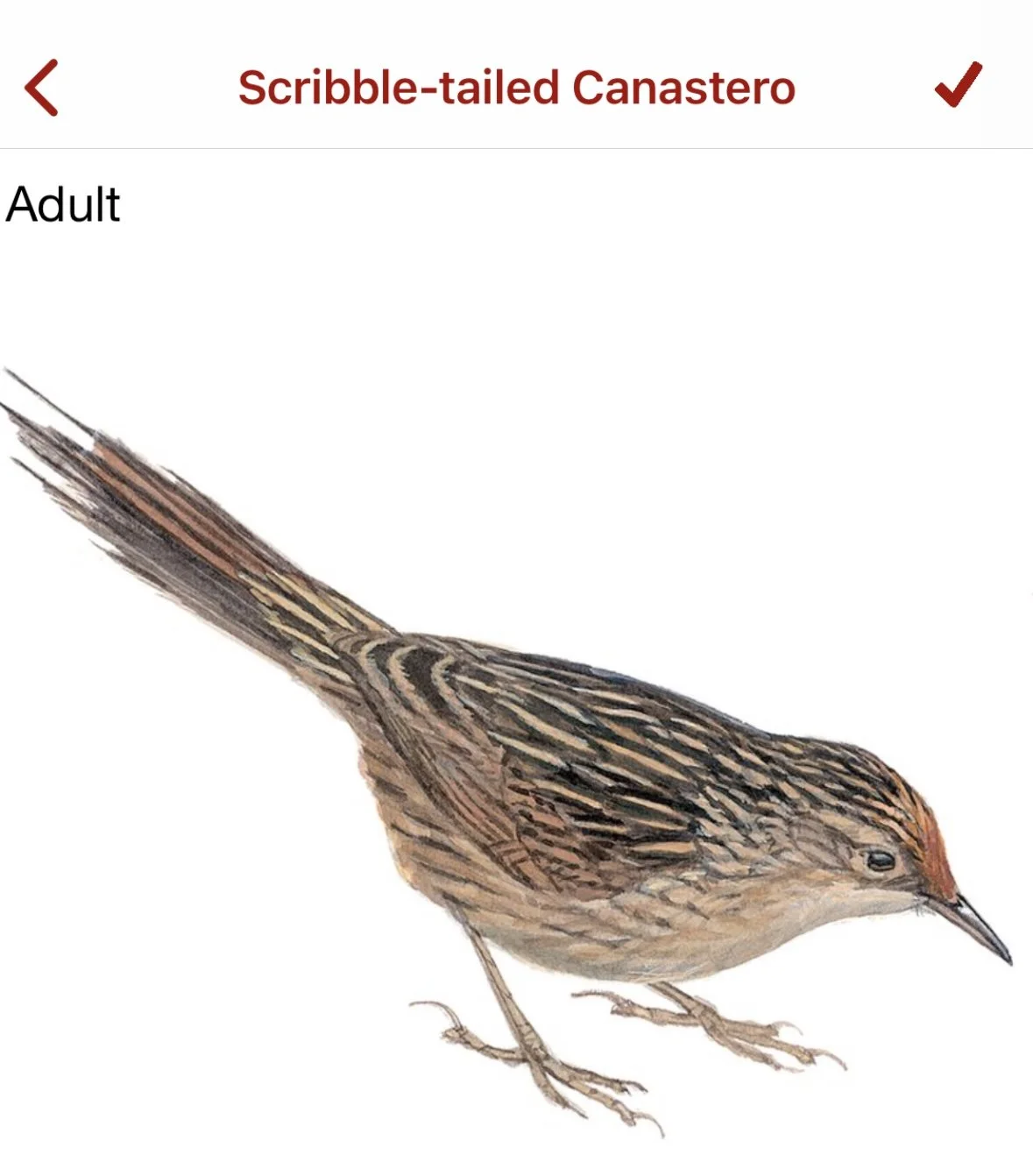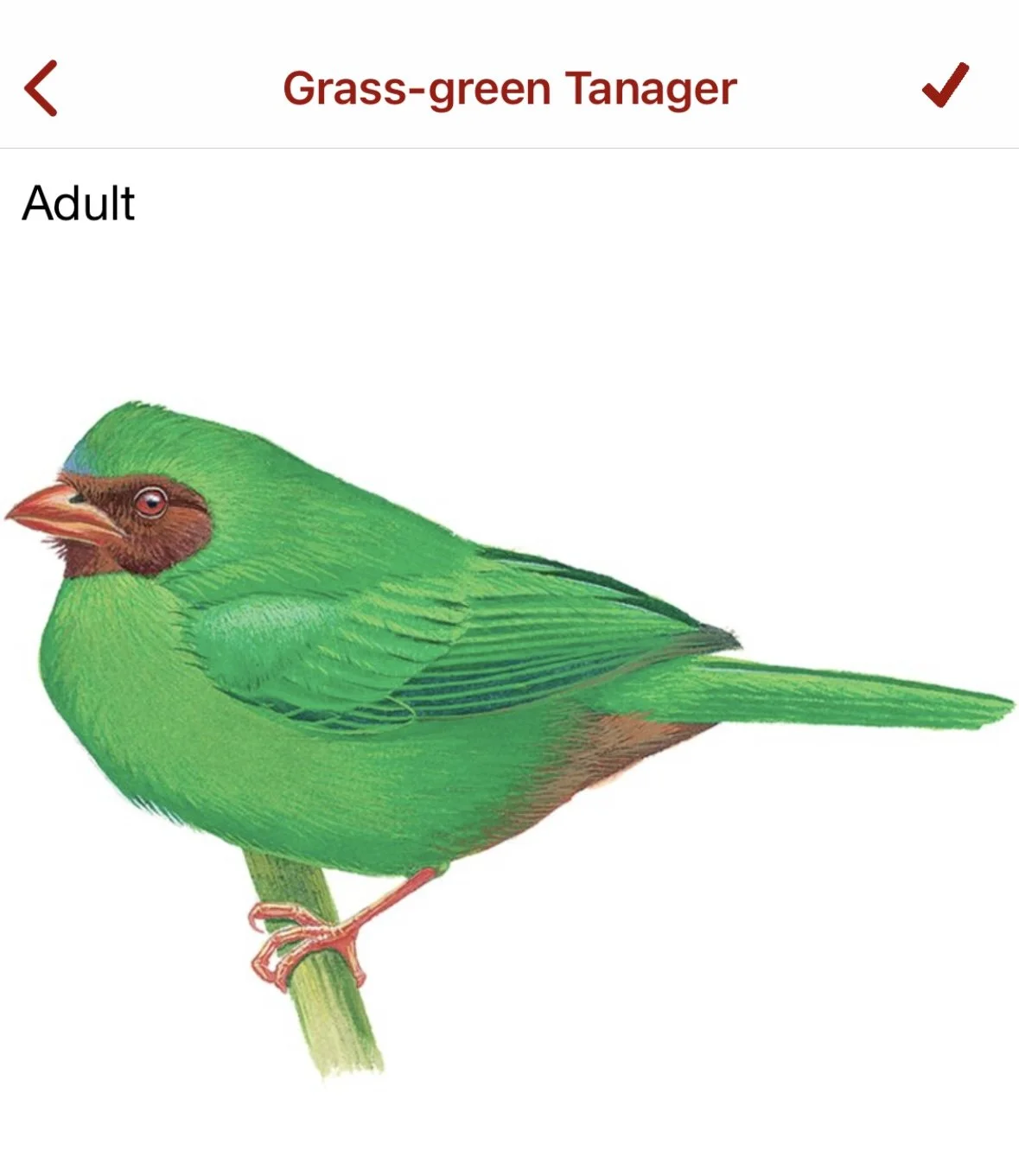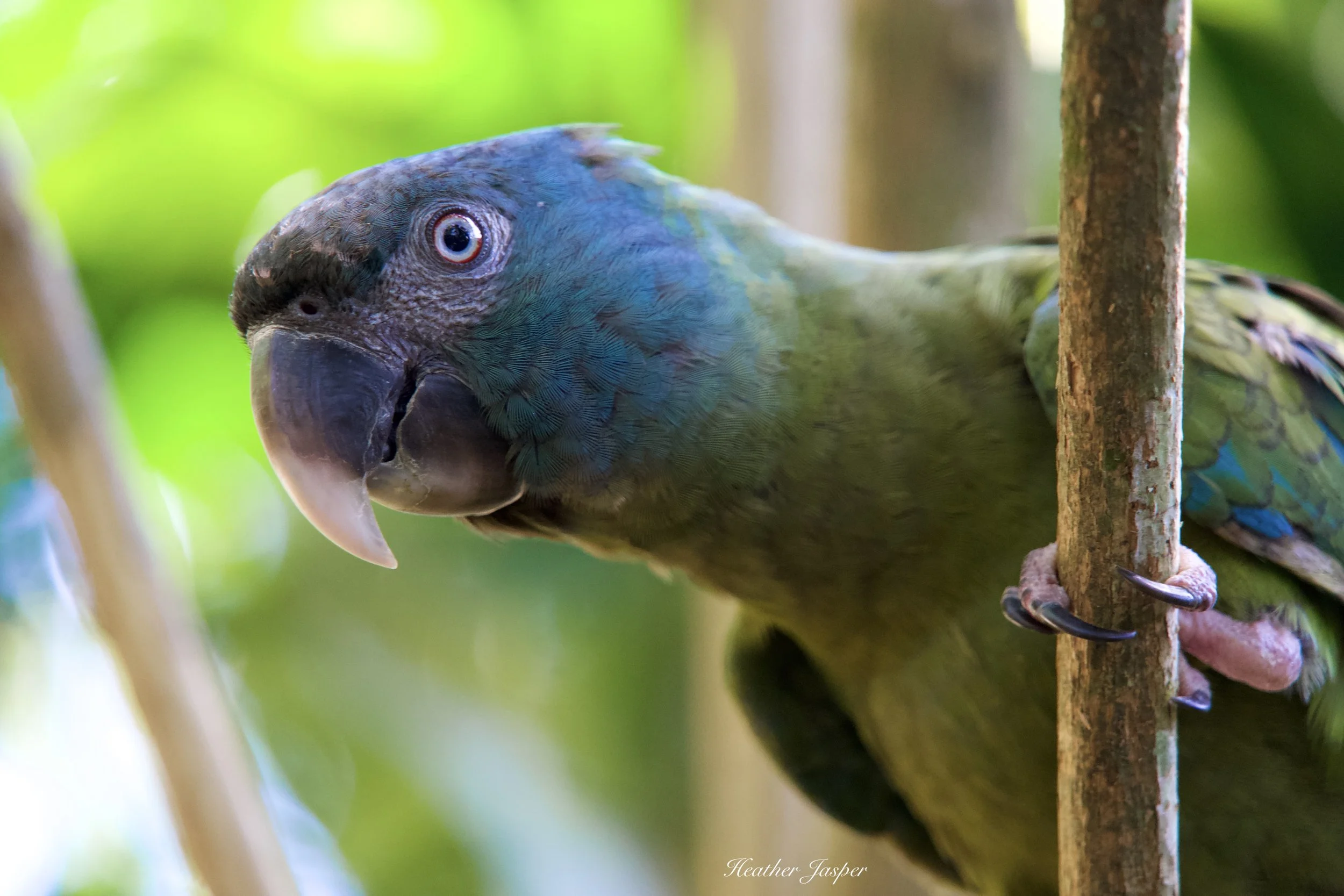Global Big Day at Wayqecha
The clouds behind me are what give this forest such extraordinary biodiversity.
Global Big Day is when birders around the world count birds.
If that sounds vaguely like a 2011 comedy with Jack Black, Steve Martin and Owen Wilson, you’re not wrong.
Global Big Day is a fun day when birders can guilt-trip their friends into getting up before the crack of dawn and going outside “for science.” We register the birds we identify on eBird, giving ornithologists a great picture of which birds are where during seasonal migrations.
You can tell the bird in the tree is a Great Thrush with a bunch of dried grass in its beak, right?
My foggy photos
My Global Big Day this year was at Wayqecha Biological Station in the cloud forest (more on Wayqecha below) and it was alternately cloudy, foggy and drizzly. My photos were mostly terrible, so photos below are from other (sunny) birding days, many are not far from Wayqecha at nearby Manu Biological Station and the Ensifera Ensifera Hummingbird Gardens in the Sacred Valley.
Thank you to Norma & Jesús for being such a great team to spend Big Day with!
So, what is Big Day?
The Cornell Lab of Ornithology organizes this global event twice a year during spring and fall migration seasons, picking a Saturday in May and a Saturday in October. It’s citizen science, when regular people can add to a global database of which birds are where and how many there are. Birds identified by sight or sound go on a birder’s list, usually tracked on eBird but also on Merlin, both of which are associated with Cornell, the Meta of birding.
I saw so many macaws birding with Rainforest Expeditions in the Tambopata National Reserve, Peru.
For night owls and people who just love owls, this day starts just after midnight and goes till midnight. Thankfully, birds tend to be less active around the middle of the day so birders can have a long lunch and maybe a siesta. However, really competitive birders power through and try to get as many species as they can in 24 hours. (My bird list is below).
I had a fun Big Day at Wayqecha Biological Station
I was thrilled to be invited to spend the night before at Wayqecha so I could be there for our 4am start to the day. That’s not sarcasm. I really was excited to be invited because I’ve been wanting to stay there for years. I can handle getting up that early as long as there’s coffee and the promise of adding new birds to my life list.
For the non-bird nerds out there, a life list is the list of all the birds a person has seen in their life. I don’t have a real life list, which would track all the birds I’ve seen everywhere in the world, but I do track how many bird species I’ve seen in Peru. So, I only qualify as a real bird nerd in Peru.
The Hoatzin is one of Peru’s strangest birds and it’s very common. I saw this one at Manu BioStation.
Wayqecha is more about bears than birds.
Wayqecha is a research station in the cloud forest north of Cusco, where a stellar team of biologists track Andean Spectacled Bears. Ruthmery Pillco Huarcaya is a Peruvian bear specialist who has dedicated her life to studying these bears – watch this amazing 15 minute documentary about her and the bears.
I drove there the day before with Jesus Ccari founder of EcoPerú Tours and was warmly welcomed by the Wayqecha team. It’s only three hours from Cusco, not far past Paucartambo, which I blog about every July. I go by Wayqecha every time I drive to Manu National Park or Manu Biological Station.
It was barely light at 5:30am when we got to where we hoped to find a Scribble-tailed Canastero.
Target bird: the Scribble-tailed Canastero
My team was Jesús and Norma, one of the bear biologists who had agreed to be a birder for the day. The bird we really had to see that day was the Scribble-tailed Canastero because there is an area of Wayqecha where it’s relatively easy to find and because it’s unlikely other birding teams would see one. Bird lists are aggregated on eBird by country, so it’s important to find species that are less common to ensure they’re counted in the overall tally.
We weren’t trying to get a long list of species for ourselves and spent hours on a few birds we were trying to identify to get them on the list for Wayqecha and for Peru.
With this Broad-billed Motmot in the Tambpoata National Reserve, I finally saw all five species of Motmots in Peru.
So, why is it such a big deal in Peru and Colombia?
Both Peru and Colombia have extraordinary biodiversity, bird life and endemic birds. They regularly top the list as the two countries where the greatest number of species are identified on Big Day.
On March 11, 2024, birders in Colombia identified 1,526 species and in Peru identified 1,428 species. However, that day 11,717 checklists of birds were submitted in Colombia and only 4,150 in Peru.
This Black-tailed Trogon in Manu is one of Peru’s eight species of trogons. I’ve seen six of them so far.
In Peru and Colombia, this fun day is very serious.
Colombia always has three to four times as many birders out on Big Day but only manages to identify about a hundred more species than Peru. Even if you’re not as partial to Peru as I am, I hope you’ll root for the underdog.
These Dusky-headed Parakeets nest near the cabins at Manu BioLodge.
There is a lot at stake.
Peru and Colombia both have economies that rely heavily on tourism, and both suffer from illegal deforestation in some of the most biodiverse regions. Attracting international birders to both Peru and Colombia for Big Day can shine a spotlight on the need to protect the rainforest and other critical bird habitats. The influx of international birders also boosts local economies in areas where alternatives to tourism may be illegal logging and dredge mining – both of which obviously destroy bird habitat.
We saw several Tyrian Metaltail hummingbirds around Wayqecha but none of my photos were half as good as this one I took of a Tyrian Metaltail at the Ensifera Ensifera Hummingbird Gardens in the Sacred Valley.
So, how many birds did I see?
Norma, Jesús and I identified 40 species, 22 of which were new to me and I added them to my Peru life list. I only managed to get semi-decent photos of 7 of those. None of them are great photos, mostly because the weather and light weren’t great and partly because I was so busy identifying birds with binoculars in one hand and noting them on my phone with the other hand that I didn’t have a spare hand for the camera. Big Day isn’t a great day for photography because competitive birders are rushing around to spots where they think they can record the most species or record rare species like the Scribble-tailed Canastero.
Personal goal: achieved!
What I really wanted to see was the Grass-green Tanager and I am so excited to report that I saw several! We saw three mixed flocks, which is when birds of different feathers flock together. In two mixed flocks I saw one Grass-green Tanager and the third had two of them. I don’t have a good reason for wanting to see that particular tanager besides that I love tanagers and it’s a tanager I haven’t seen before.
The two tanagers above were also new to me, though the Golden-collared Tanager refused to look at the camera. My Peru book has 90 species of tanagers, and I’ve only seen 21 so far. If you’re going birding in Peru anywhere with tanagers, please invite me to join you!
Wayqecha has lovely cabins to stay in, each with a view across the cloud forest.
Why go birding at Wayqecha?
Though most famous for bears, Wayqecha is an amazing place for birding. It’s 1,450 acres with 9 miles of trails and goes from about 6,500 feet above sea level up to 9,875 feet. In such a biodiverse place as the Peruvian cloud forest, the ecosystem changes every 1000 feet of elevation or so. That means within Wayqecha there are many micro-climates and diverse ecosystems – each with a different set of birds.
I saw lots of Shining Sunbeam hummingbirds around Wayqecha, though this photo is from the Ensifera gardens.
Wayqecha needs more bird researchers!
If you (or anyone you know) is looking for a place to research birds, stop looking and go to Wayqecha! They have so far hosted over 80 research projects, 56 grants have been awarded to work there, and 28 peer-reviewed papers have been based on work at Wayqecha. A lot of that is about the bears and they’re looking for more people to research birds at the station.
This Gould’s Jewelfront hummingbird was just downhill from Wayqecha at Manu BioStation.
The cloud forest is more comfortable than the rainforest.
One of my favorite things about the cloud forest is that it isn’t as hot as the rainforest and doesn’t have as many bugs that want to eat humans. In a full 12 hours outside looking for birds on Big Day, I came home with one mosquito bite on my left hand though I wasn’t wearing any insect repellant. In the rainforest, especially below 4,000 feet above sea level, I wear lots of repellant, long sleeves and long pants and always end the day with a depressing number of bites.
You could be here! This is the dining room, where you can eat three delicious meals a day while watching all the birds that come to the feeders around the yard.
The bottom line:
Whether you’re interested in birds or bears or just want to experience a cloud forest, Wayqecha is an amazing place. I highly recommend contacting them (bherrera@amazonjourneys.pe) about visiting either as a tourist or as a researcher.
My bird list from October 11, 2025
Birds with a * are ones that I saw for the first time and added to my life list.
Great Thrush, Rufous-collared Sparrow, Black-throated Flowerpiercer, Mustached Flowerpiercer, Scarlet-bellied Mountain Tanager,* Blue-and-white Swallow,* Sierran Elaenia, Scribble-tailed Canastero,* Shining Sunbeam (hummingbird), Puna Tapaculo,* Tyrian Metaltail (hummingbird), Gray-breasted Mountain Toucan,* Variable Hawk, Chiguanco Thrush, Rufous-breasted Chat Tyrant,* Southern House Wren, Brown-backed Chat Tyrant,* Hooded Tinamou, Line-fronted Canastero,* Masked Flowerpiercer,* Montane Woodcreeper,* Golden-collared Tanager,* Grass-green Tanager,* Rust-and-yellow Tanager,* Amethyst-throated Sunangel (hummingbird),* Hooded Mountain Tanager,* Blue-capped Tanager,* Azara's Spinetail, Mountain Cacique,* Russet-crowned Warbler,* Spectacled Redstart,* Cinnamon Flycatcher, White-winged Black-Tyrant,* Three-striped Hemispingus,* White-banded Tyrannulet,* Slate-throated Redstart, Three-striped Warbler,* Andean Guan
Planning a trip to Peru?
Contact me for help planning your trip and download my Peru travel guide app!

